Be sure to check out the previous post in this series: Tools to Optimize Your Marketing Funnels and Generate Massive ROI
As your business scales, one of the most important factors to help it grow systematically is a marketing funnel. Without one, it becomes significantly more difficult to see the areas of your business where you could improve in order to generate more revenue.
Marketing funnels are essentially a structured path for a potential customer to go from hearing about your business all the way down to making a purchase.
In this post, we’ll talk about the different types of funnels, how to test them, and 5 case study examples of how companies set up their funnels to boost conversions and revenue.
Traditional Marketing Funnel
For a more in-depth description of marketing funnels, check out The Ultimate Guide to Creating Your Marketing Funnel.
Generally the traditional funnel is made up of four stages: AIDA:
- The “Awareness” stage usually consists of blog posts, e-books, paid advertising, and other content to make more people aware of your business.
- The “Interest” stage is designed to keep people engaged and interested so that they return, and one of the best ways to do that is by collecting e-mail addresses.
- The “Desire” (or “Evaluation”) phase consists of the prospect opting in to your e-mail list and then evaluating your products and services against your competitors. At this stage, content like whitepapers and case studies tend to be most effective.
- And finally, the “Action” stage is the natural conclusion to the preceding three stages and is when the prospect makes the decision to purchase.
While this funnel outline covers the basics of what a marketing funnel should do, there are other funnel formats that marketers use.
Learn More:
- How to Create a Marketing Funnel that Generates Sales (Templates Included)
- How to Map Out Your Marketing Funnel
- [Podcast] How to get Sales and Marketing to Work Together
Conversion Funnel
Neil Patel is a big proponent of what he calls the conversion funnel, which places more emphasis on customer behaviors, lead nurturing, and retention at every step of the process.
There are more questions asked at each step of the funnel, such as:
- “How do we make the customer more aware of our brand?”
- “How do we entice them with an irresistible offer?”
- “Why would they not act and what can we do to fix it?”
- “How can we recognize and anticipate their needs?”
This type of funnel is more open-ended than the traditional funnel because it doesn’t conclude when the prospect buys your product, but rather works to retain them.
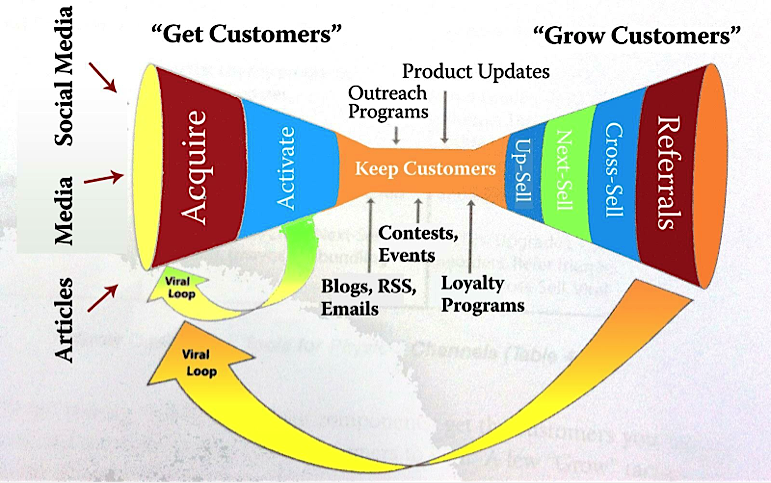
Step 1: Attracting Customers
This stage would likely involve driving customers to a landing page from articles, social media, etc.
One of the biggest mistakes that companies make at this step is not understanding what their customer really wants. For example, check out this landing page for a school that specializes in nutrition courses:
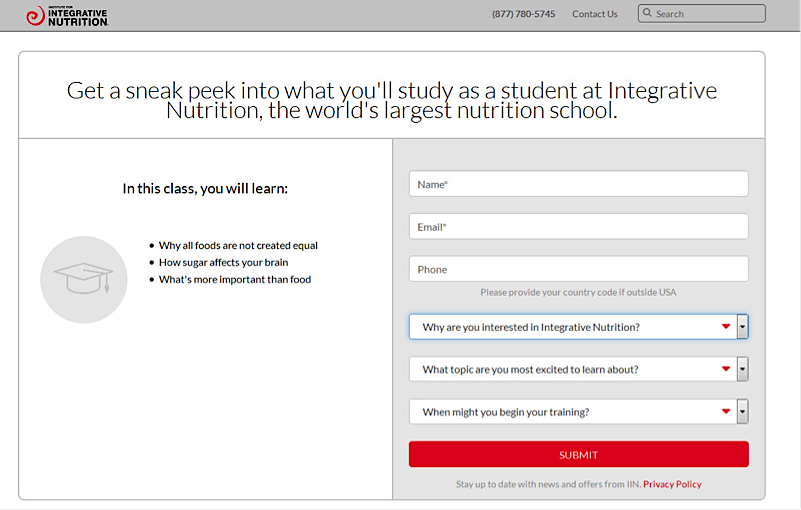
From a customer’s point of view, there are a log of unanswered questions on this page that would prevent them from completing the sign-up form — questions like:
- “How do I talk to someone if I have questions?”
- “Where can I find the course catalog?”
- “How much does it cost to take a course?”
- “What do other students say about the course?”
Without getting these questions answered, there’s not much motivation for customers to enter their information which prevents you from moving them further down the funnel.
Step 2: Encouraging Action
How do you compel action from your prospect? By creating an emotional investment in them through a series of “quick wins.”
Allowing your prospect to achieve a quick win will help guide them through each step of the funnel by encouraging them to take one small successful step at a time. For instance, a quick win for Instagram would be guiding your potential user to create their first picture. As Growth Hacking Pro says, “It’s their immediate reward for going through the trouble of learning about you, trusting you with their email, and going through the registration process. The quick win should be a small taste of your product’s core experience.”
For example, check out what Seamless (an on-demand food delivery company) did below. Their main customers are busy professionals who don’t have time to cook or constantly plan their next meals.
Knowing this, the company created short, mobile-friendly messages that offer a discount code.
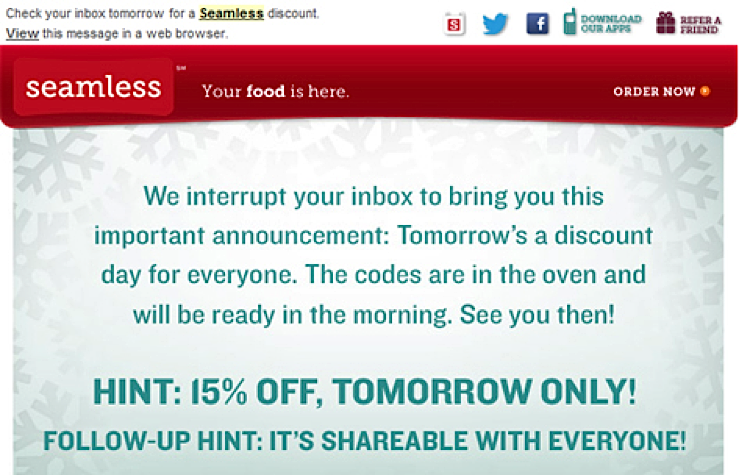
Source: Neil Patel
Then they sent this follow-up code:
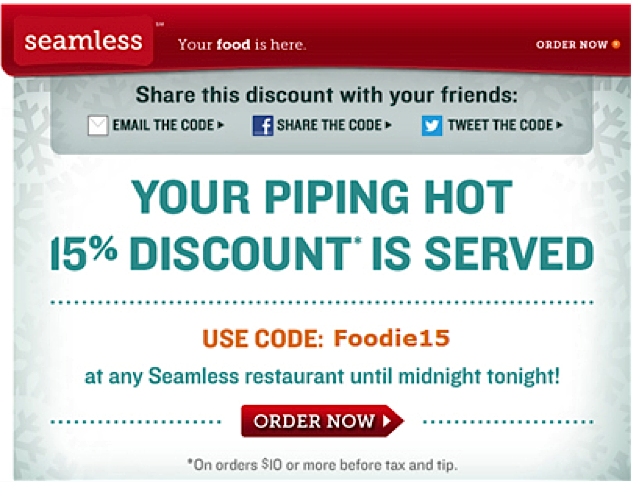
Source: Neil Patel
The message is brief and sharable.
Once you understand what your audience wants, you can encourage them to take action in “bite-sized” ways as they move through your funnel.
Step 3: Build a Content Plan
Neil Patel gives an example of a computer repair store. In the first step of the funnel, you’d use local media outlets, social media, and content on your blog to address some common computer repair problems that customers have. The top of the funnel is about getting more people familiar with the services you offer and convincing them of your expertise.
As they move down the funnel, the motivation for purchase would be urgency-based because most people who seek computer repair help need it right away.
Once customers have purchased, you could add on an outreach program, local contests and events, and loyalty programs to increase the likelihood of referrals and repeat business. Upgrades and new software could be a great way to craft up-sells and cross-sells to get customers to buy more than once.
A helpful piece of content for new prospects who arrive on your site is a “start here” page. This is a page that tells you exactly what you should do once you arrive on a site, along with the main categories of what it has to offer (i.e. “first, check out XYZ articles, then sign up to my e-mail list”).
Step 4: Get Referrals
Not only are current customers more likely to buy from you again, but new customers are also 71% more likely to purchase based on social media referrals.
Dropbox got amazing results with their referral program. They went from 100,000 to 4 million users in just 15 months. In one month, users sent out over 2.8 million referrals from the platform.
In Dropbox’s case, there were multiple factors that contributed to their huge success with referral marketing: 1) the person that gives the referral gets something (like free space up to 16 GB), and 2) the referral gets something as well (more space in their account if they sign up).
Here are a few key points to keep in mind when building referral systems at the end of your funnel:
- Identify the target market that could get the most benefit by sending you referrals.
- Let the market know specifically what type of customer you’re looking to attract.
- Offer tempting incentives for the referrals.
- Make your system rewarding.
But what you do after getting your conversion is even more important than everything you did to get that customer to convert. After a customer transacts with you, think about what they would want in the next step:
- They want to be reassured that they made the right decision.
- They want to quickly get started using your product (with clear instructions).
- They want to see support options in case they have any questions.
- They want to know how to request a refund or make a return.
The main difference between the traditional and conversion funnels is that the conversion funnel doesn’t make the assumption that conversion ends once the customer buys. Instead, it continues until the customers become advocates for your business.
Learn More:
- Automation Master Brad Martineau on How to Set Up Successful Sales & Automation Funnels [Podcast]
- How to Guide Your Customers Through the Marketing Funnel with Interactive Content
- Step by Step Guide: How to Build a High Quality Marketing Funnel
Testing Your Funnel
Once you have all the parts of your funnel set up, you’ll have to test them in a budget-conscious way. Here’s what to look at when figuring out which pages to test first:
- Prioritization. Focus on your best performing pages rather than try to improve your worst performers.
- Ease of implementation. If you expect any part of your implementation to be highly technical or time consuming, move on to the next one.
- Conversion value. The parts of the funnel that bring in highly targeted customers who are aware of your brand are the ones that should be prioritized the most. These are the customers who will be more likely to convert with a lower up-front investment.
There are a couple of tools you can use to test out your funnel in a cost effective way.
Google Analytics
The easiest way to start testing your funnel is by setting conversion goals in Google Analytics. This tool allows you to track customers from the moment they land on a page, see what their actions are, and discover where they drop off. Funnels have “holes” at each step, and the best way to patch those up is by looking at the data on drop off patterns.
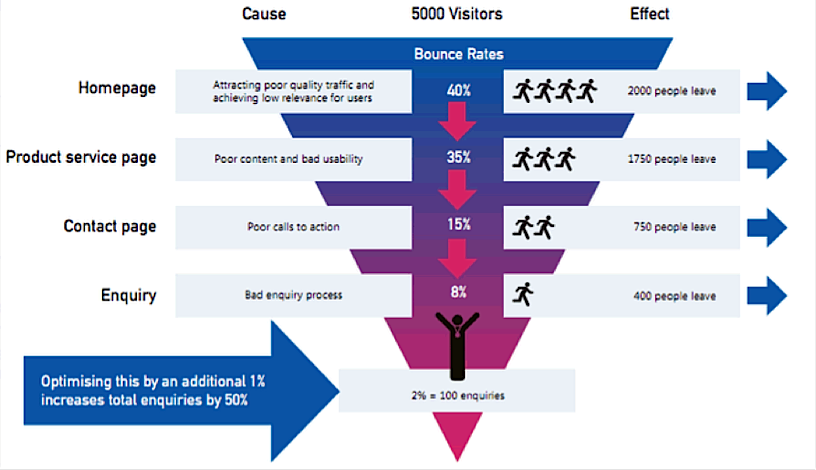
Source: Coast Digital
Once you add your website to your Google Analytics page, you’ll find the relevant tracking code on the “Admin” link. From there, you can copy and paste the code on all the pages you want to track.
There are a few different types of conversion goals that you can track:
- Destination – Use destination goals to set a page view as a conversion.
- Duration – Set duration goals to measure time on page, and tie that to a conversion goal.
- Pages/screens per session – Setting pages/screens per session as a goal allows you to measure user engagement by observing the number of pages/screens a user views in a single session.
- Event – Set an event goal if you want to set a user interaction on your site as a conversion (like signing up for an e-mail list).
See how to create conversion goals within Google Analytics in our previous post: Tools to Optimize Your Marketing Funnels and Generate Massive ROI.
Now you’ll be able to measure conversion rates at each stage of your funnel so that you know the patterns behind customer drop off. This will better equip you to patch those “holes” and ultimately boost your bottom line.
Optimizely
Another way to track your conversions is through Optimizely.
Once you log in to Optimizely, you can go to the Editor where you can click on the flag icon to add new conversion goals or experiments.

From there, you can create a new goal:
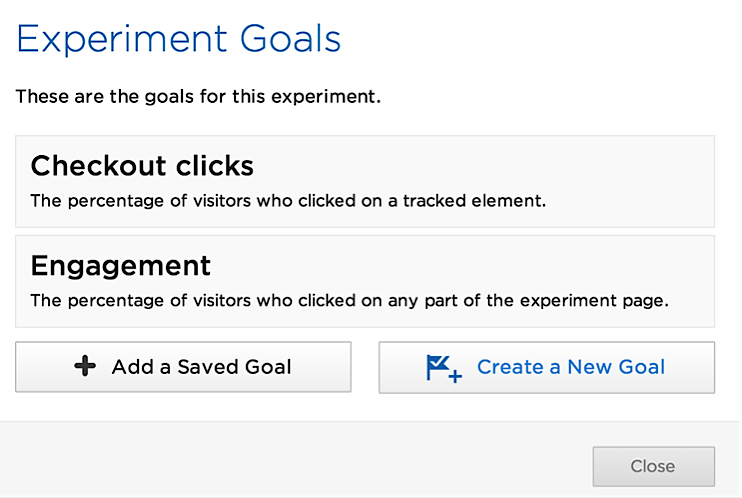
By sharing goals between experiments, you can save time that you might normally spend recreating them each time. To add a goal that you previously created, you can click “Add a Saved Goal.”
Optimizely also has a variety of goal types that you can choose from:
- Click event goals: If you want to track clicks as conversions, then this goal will do the job.
- Custom goals: If you want to track how many times a certain item (i.e. input boxes on forms) was clicked, then you can create a custom goal. If you have your revenue numbers broken down at each step of the funnel, you can also assign monetary value numbers to conversion goals. For example, maybe you know that 1% of e-mail subscribers end up buying your product. Based on your product’s price, you should have a good idea of what each subscriber is worth to you.
- Page view goals: Just like Google Analytics, this goal measures how many times a specific page was viewed.
Finally, you’ll want to make sure all these individual goals fit within the grand scheme of your funnel. In Optimizely, this is called “multi page experiments.”
To do this, first choose a multi-page experiment. You can easily do this from the Editor by going to Options > Experiment type.
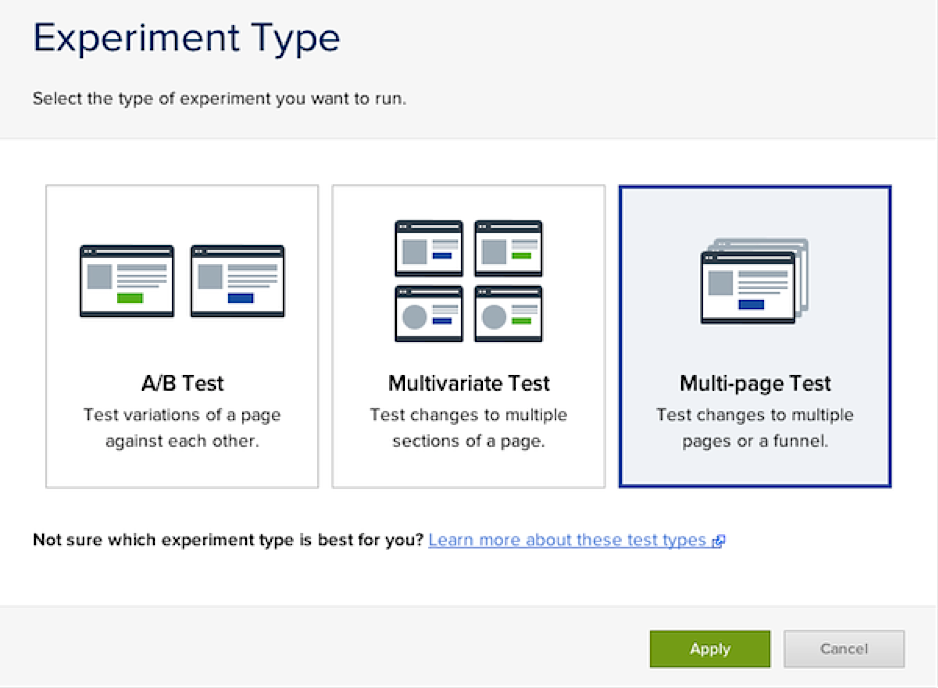
Then, just like you added individual steps to your goals, add individual pages to your funnel by clicking the “Add page” link.
Next, create variations of the different pages that you want to test.
For example, Crate & Barrel varied their holiday messages on a couple of different pages to see which would encourage more sales.
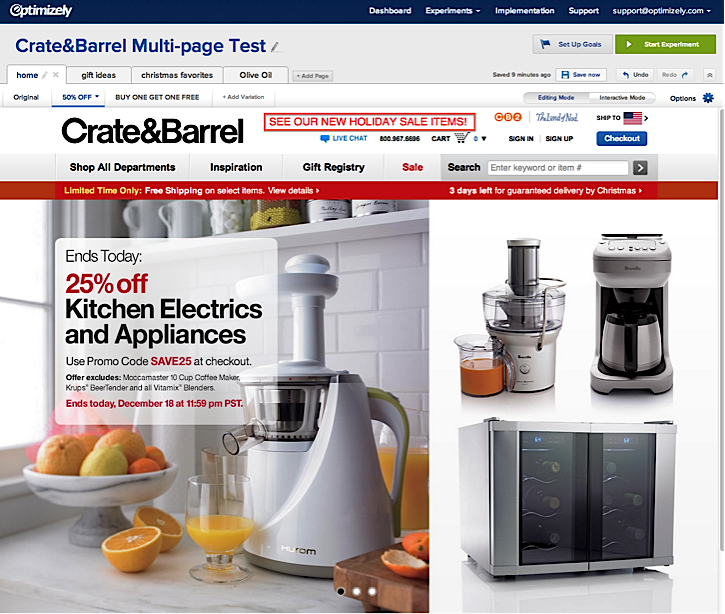
The second option was this:
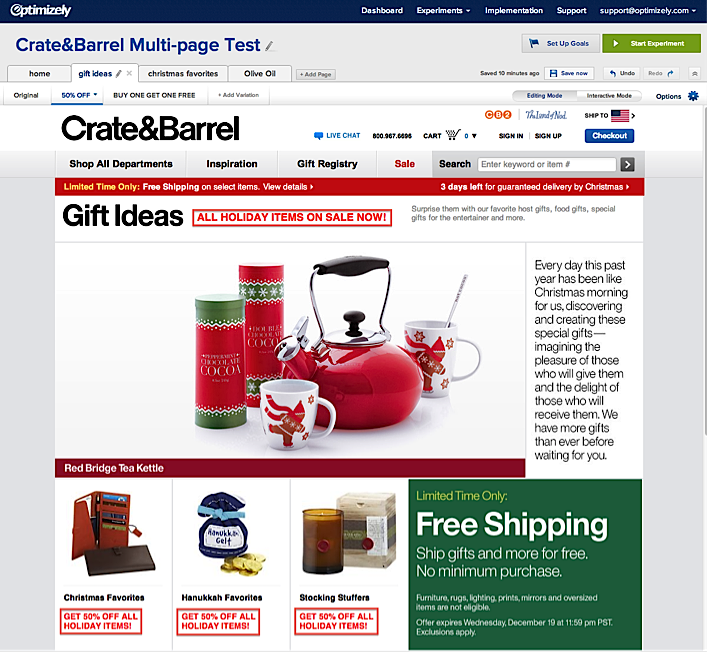
After the test pages are set, you have to makes sure that users continue to see the same pages as they move through the funnel.
You can do this by going to Options > URL Targeting and specifying the targeting conditions for each page:
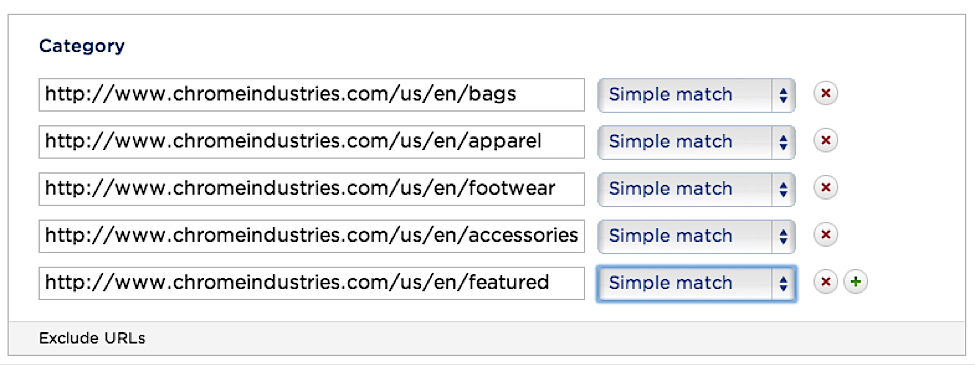
Once you have your data, you can start tweaking the pages of your funnel to reduce customer drop-off at each step based on which copy, design, and messaging resonates with them.
Now we’ll take a look at a few companies that used funnel optimization strategies to boost their conversion rates and revenues.
Learn More:
- The Turkish Rug Funnel (How A Rug Store Got Me To Shell Out A Few Thousand Dollars with ZERO Initial Interest)
- The Content Marketing Funnel: When to Use Different Types of Content
- Tools to Optimize Your Marketing Funnel and Generate Massive ROI
5 Case Studies of Successful Marketing Funnels
Case Study #1: CrazyEgg
CrazyEgg is a SaaS company that provides a heat map tool to help businesses better understand how users are interacting with their site.
Their sales funnel breaks down in the following five stages:
1) Awareness
Building awareness is the first step of any funnel. Before readers can be guided down the process to make a purchase, they first have to find out about your business in some way and become interested in what you have to offer. Marketing at this stage involves paid traffic, blog content, and optimizing for SEO to get more exposure for their brand.
Here’s one of CrazyEgg’s Facebook ads that was used to build awareness:
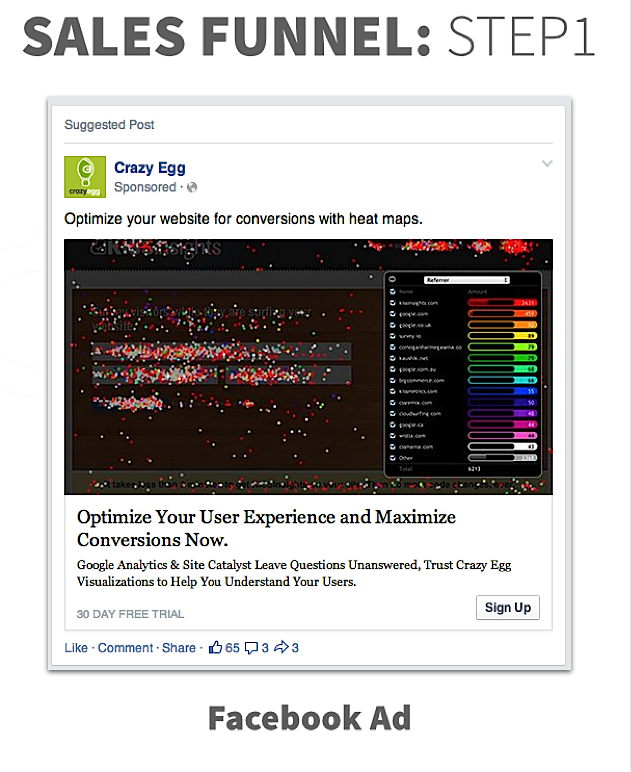
Source: Click Funnels
Here’s another example of content that was used to build awareness:
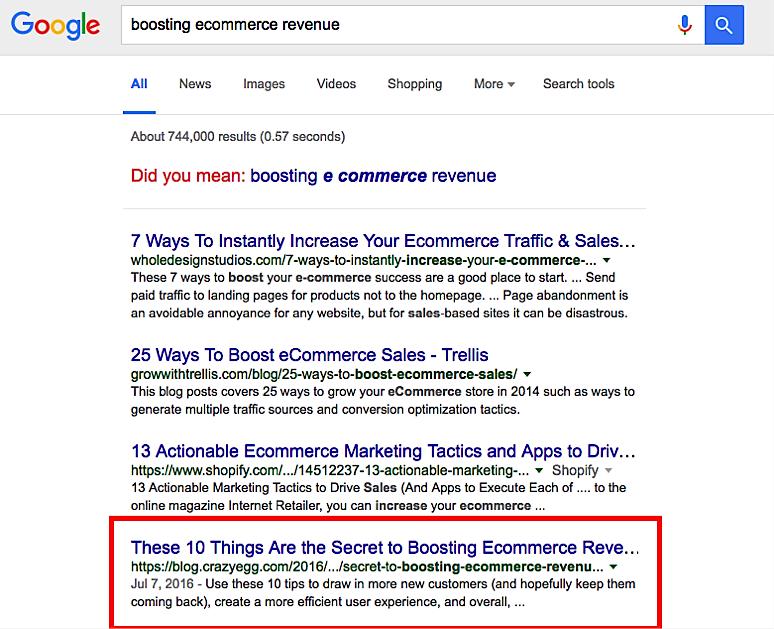
For readers who want to know how to boost e-commerce revenue, they’ll find one of CrazyEgg’s blog posts on the first page of Google’s search results.
Readers will have different experiences going through CrazyEgg’s funnel depending on what content they see first. In this example, we’ll stick with what follows after clicking on the Facebook ad.
2) Interest
The second step in CrazyEgg’s funnel is directing readers to their home page. From there, prospects have the option to express further interest in the business by entering their website’s URL to see a heatmap analysis of why their visitors are leaving.
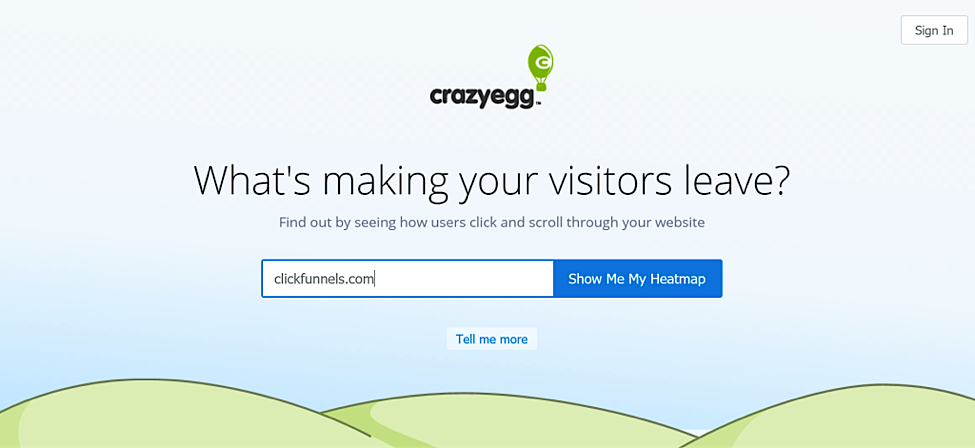
3) Decision
Once prospects enter their website URL into the box on CrazyEgg’s home page, they are taken to a page that requests access to their Google Analytics account. After they’ve provided access, they’re taken to the following pricing page, where they’re asked to choose between a few pricing plans.
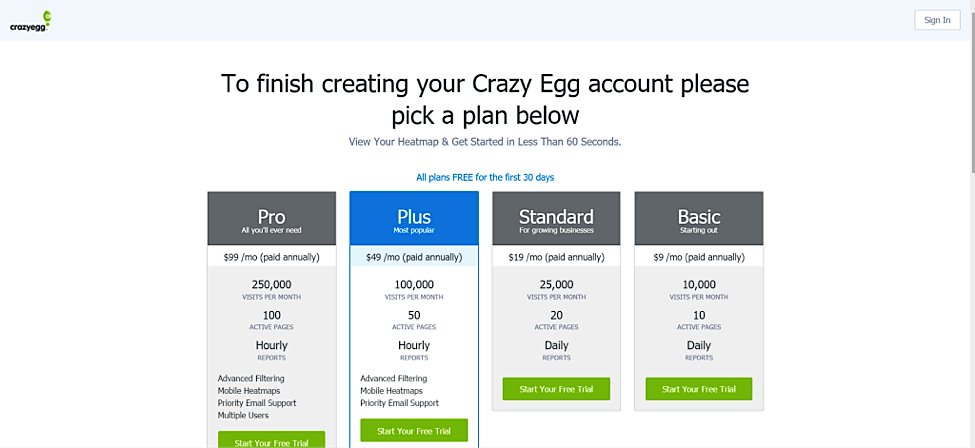
Leads can either choose one of the options right away, or they can bounce, in which case CrazyEgg sends them a lead nurturing autoresponder sequence over a span of time.
For example, according to Clickfunnels, CrazyEgg builds a relationship over time with their audience by sending out “How can I help you” e-mails and educational e-mails to give leads more information about the product and the company.
4) Sale
Finally, when leads are ready to buy, they’re directed to the following page where they’re prompted to fill out their billing information. This page includes logos of popular brands that use CrazyEgg, as well as a list of common questions (it’s no secret that FAQs can grow your sales).
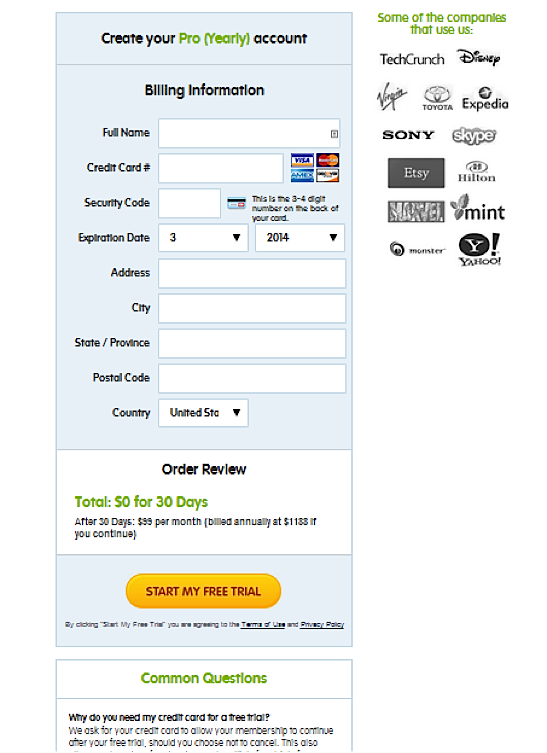
The reason this funnel works is because:
- CrazyEgg gives customers real value at every step of the funnel. For example, their landing page copy — “What’s making your visitors leave?” — hits the exact burning question that their target market has.
- They offer a 30-day free trial period so that there’s minimal risk for the buyer.
- They set cookies on customers’ browsers so that they can easily pick up at the appropriate place within the funnel if they revisit the site.
Case Study #2: Basecamp
Basecamp is a project management tool that helps businesses collaborate in a more efficient way.
They follow a similar step-by-step funnel outline as CrazyEgg. They start off by building awareness for their company and products, then funnel prospects to a page where they have the option to express further interest in their offering, and finally they’re directed to a page where they can make the decision to purchase (in this case, sign up for a free trial).
1) Awareness
Basecamp doesn’t normally run much paid advertising campaigns, but they do share relevant content on their blog — called Signal vs Noise — for their target audience.
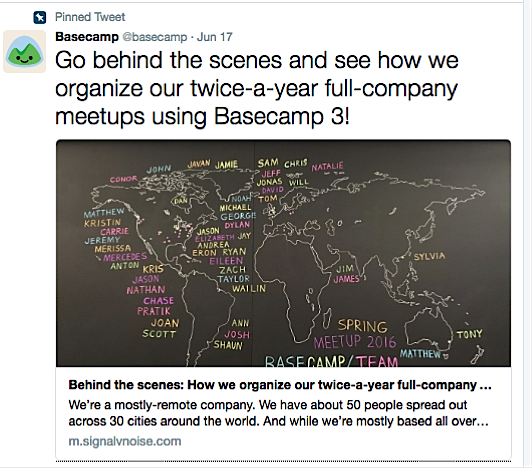
2) Interest
Once potential customers move through the top of the funnel by coming across one of Basecamp’s social media updates, blog posts or referral links, they would likely land on the company’s website home page where they’re immediately prompted for their e-mail address and a few other details.
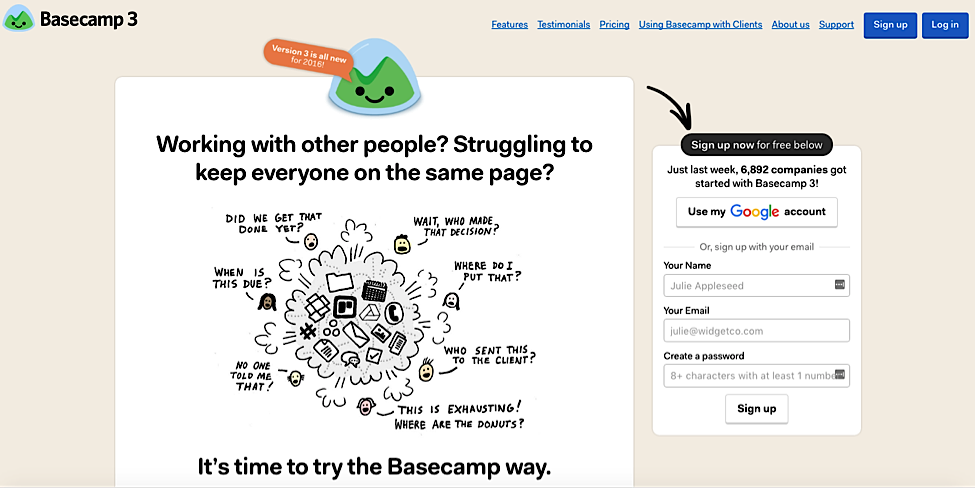
Here, they’re asked for their name, e-mail, and password. They also have the option to sign up with their Google account. Once potential customers submit their details, they’re taken to the final stage of the funnel.
3) Decision
Finally, leads are sent to a page where they have the option to sign up for a free trial. They’re also sent an e-mail about how to sign up. Once they start the free trial, they can start with a sample Basecamp dashboard or create their own.
The main reason why this works is because it guides people from prospect to lead with just two clicks. High friction is one of the biggest reasons why people drop off in various parts of a marketinf funnel. Friction is anything that reduces conversions, like a slow loading page, too many forms that need to be filled out, more steps than necessary in a funnel, and a CTA button that’s hard to find.
According to Chris Goward, the CEO of WiderFunnel, friction is one of the biggest killers of e-commerce sales: it causes $1.8 trillion in abandoned shopping carts every year.
By reducing the number of steps in their funnel and keeping it highly efficient, Basecamp is able to maintain high conversions while keeping their process really simple.
Case Study #3: Grasshopper
Grasshopper is a virtual phone system that lets businesses set up toll-free numbers and their sales funnel has brought them over $30 million a year.
While this funnel is similar to CrazyEgg’s, Grasshopper simplified theirs even further by removing one step from their funnel sequence. The reduction in friction is responsible in a big way for their success.
1) Awareness
As usual, the first step in a funnel is the awareness step. At this stage, Grasshopper leverages various forms of content, including YouTube videos and blog posts, as well as paid traffic to get their company’s message out to more people.
One unique way they differentiate themselves at this stage is by creating funny, interesting videos. For example, this “80’s Entrepreneur Training” video got over 260,000 views:
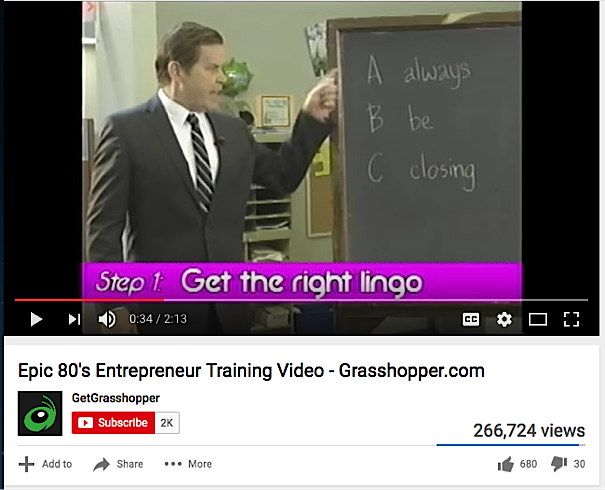
They also have a blog that provides valuable content for their target market — entrepreneurs.
2) Interest
Once a prospect watches a YouTube video or stumbles across a blog post, there are built-in ways for them to get directed to Grasshopper’s home page.
For example, near the end of this YouTube video, they present a link to their website:
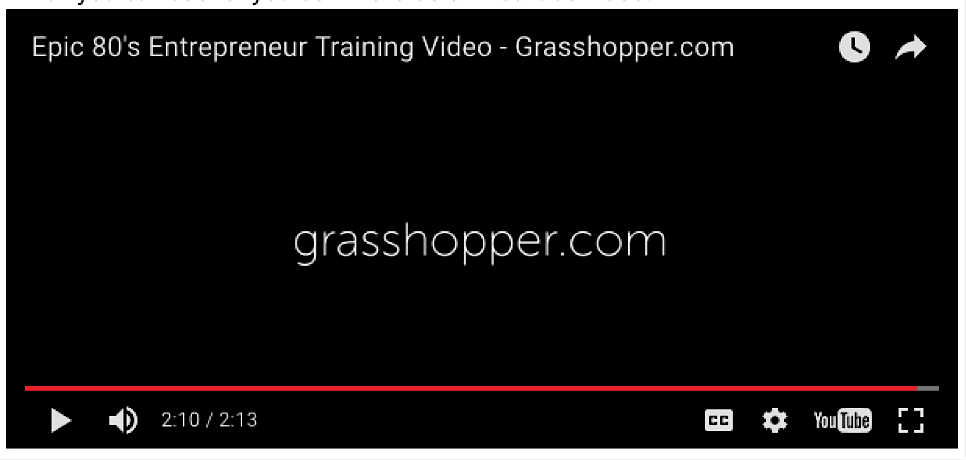
On the home page, they outline a few unique selling points, a money-back guarantee, and a CTA that says “see how it works.”
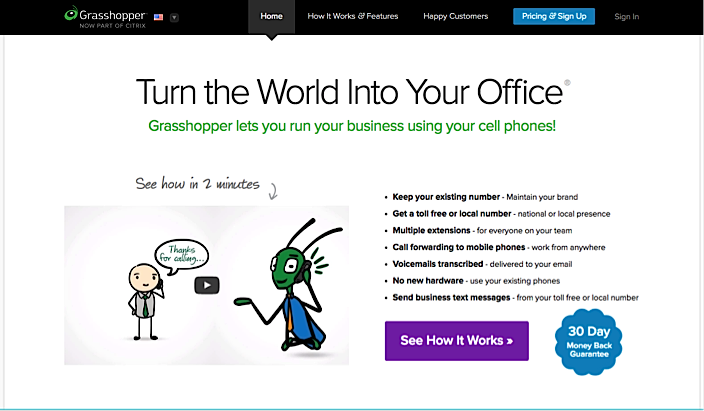
Once prospects click on “see how it works,” they’re taken to a longer form sales page where they’re encouraged to sign up. This page provides all the information prospects need to make a decision, along with several credibility markers (such as press features). If they click the button to sign up, they’re immediately directed to a pricing page.
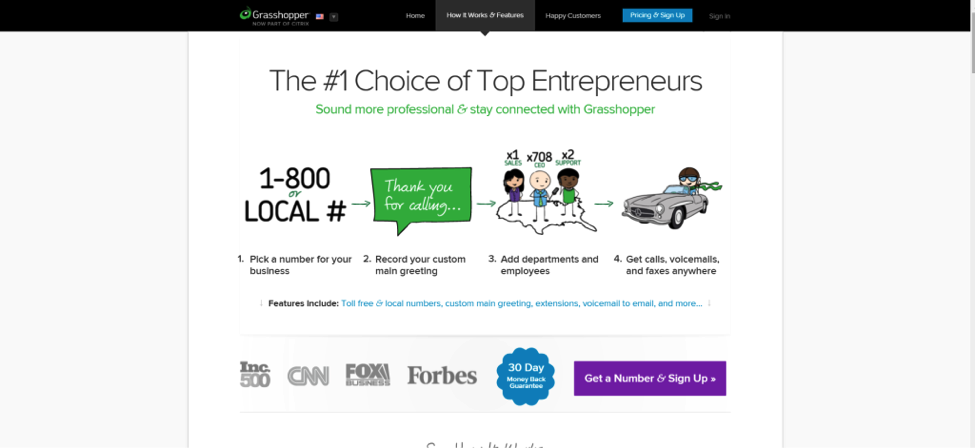
3) Decision
Once prospects click on the “sign up” link, they’re presented with a pricing page with several different plans, which all include a 30-day money back guarantee.
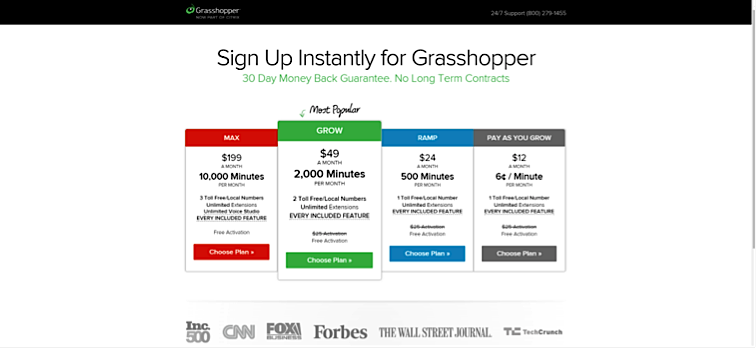
They’ve also included recognized brands and press features as social proof to boost conversions on this page. A big reason why this works is because the product is clearly explained throughout the sales funnel, which weeds out unqualified leads.
While most people obsess over button colors or font sizes in sales funnels, the highest leverage activity is often optimizing your copy and making it specific to the needs of your target audience.
For example, one of the biggest concerns that clients have when choosing a marketing agency is whether the services will be tailored to their specific, unique situation. That’s why we included this at the bottom of our services page:
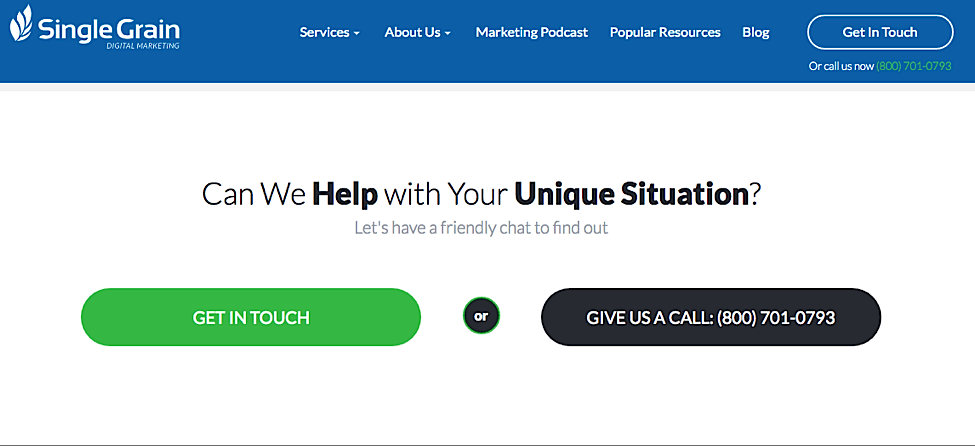
Grasshopper displayed a long form, in-depth sales page that preceded their pricing page which described how their product works and what it does — and because of this, their leads are mostly qualified.
Case Study #4: How a veterinarian boosted e-commerce sales by 50%
When we think of sales funnels, we assume that it’s mostly B2B startups or tech companies that use them. But in reality, funnels can provide a solid framework for boosting sales for all kinds of business. Even veterinarians.
Integrative veterinarian Dr. Ruth Roberts was able to boost e-commerce conversions by 50% by implementing a high-quality sales funnel.
When building a sales funnel, it’s important to have a centerpiece that serves at the “nucleus” of the funnel. This is the piece that you drive all traffic towards. Sumer Copywriting wrote a live-action video sales letter which served as the “nucleus” for Dr. Ruth’s campaign.
Because the target audience in this case was pet owners, the content of the video sales letter had to provide information that was valuable to them specifically. And if someone is searching for vet services, then chances are their pet is sick. Their video sales letter hit the nail on the head by providing a video that shows how to give pets a better life, even if they’re sick.
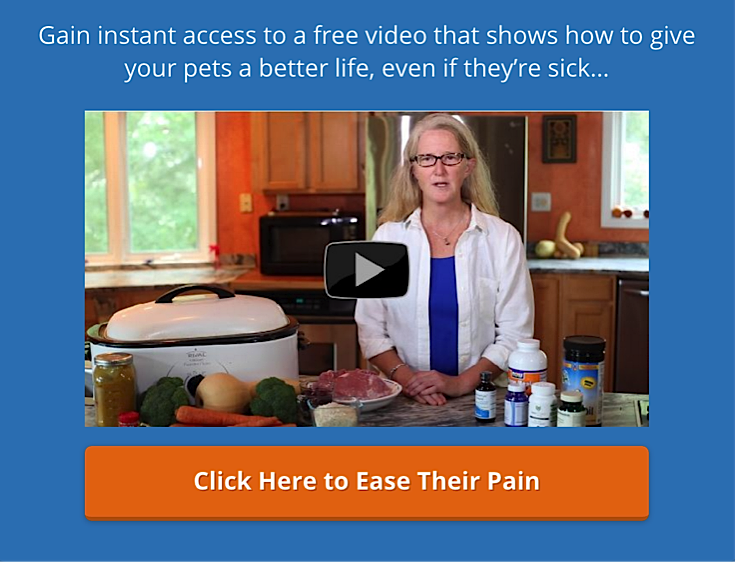
Next, the copywriting team built a lead nurturing campaign to build a relationship with the audience.
They created a couple of campaigns to start out — one that targeted pet owners with older or sick dogs and cats, and one to help people prevent diseases in their pets.
They captured leads through blog posts that offered advice on pet care, and also drove traffic through Facebook ads. This is how they generated awareness for the business. The opt-in incentive was a video, for which prospects would enter their e-mail addresses if they were interested.
Then they crafted a lead nurturing campaign. Once ideal clients have been attracted to the e-mail list, successful marketing funnels continue to deliver educational material to build a relationship with the list over time. Sumer Copywriting wrote sales e-mails that highlighted facts, offered advice, told stories, and gave away no-strings-attached gifts. In other words, they didn’t start the relationship by trying to sell anything.
The e-mails reflected the pain points of pet owners, such as not knowing which brand of food to trust and not knowing how to solve that problem. Here’s an excerpt from one of the e-mails:

Remember, the funnel shouldn’t end with a sale.
It should end with referrals.
It’s important to enhance the prospect’s user experience once they become a customer so that they are a source of referrals for the business. The post-purchase sequence in this case streamlined username and password storage, content access, bonus deliveries, renewal reminders, and more.
They summarized their process for coming up with a sales funnel like this:
- They came up with a comprehensive marketing strategy to turn cold leads into returning buyers.
- They composed compelling sales copy that reveals how to avoid illnesses common in dogs and cats — content that their target audience would love.
- They created e-mail sequences that nurtured, offered free content, sold the program, and ultimately enhanced the user experience to turned customers into advocates.
- They created a story-driven sales letter that captivates and educates viewers.
- They used Click Funnels and Infusionsoft as tools throughout this process.
- They set pricing for membership and shipments.
- They initiated social media and other outreach campaigns to generate leads, driving traffic to the sales page and video content.
- They increased conversions with split testing.
The results from this case study are quite stunning:
- 541 new e-mail list subscribers from $950 in ad spend
- 23 active subscriptions that generate recurring revenue of $730/month
- Initial sales of $3,568
- $15,000 in total online revenue in one month as a result of other promotional efforts
This case study goes to show how far you can go if you just understand the pain points of your market and create valuable content for them at every step in your funnel.
Case Study #5: Telestream
Telestream offers software that allows users to get video content to any audience, no matter how it’s created, distributed, or viewed. They produced a screen recording and editing product called ScreenFlow, as well as Wirecast for video streaming and production.
Telestream’s funnel consists of driving traffic to their website through a blog and paid traffic, and from there users can try out or purchase software.
This case study outlines how Telestream was able to boost their site conversion rate, send more traffic to cart pages, increase cart conversion rate, and ultimately boost their revenue by $2 million. Their cart conversion rate grew by 26%.
The first step in tweaking their funnel to get these results was changing their site navigation. According to Wider Funnel, the “Buy Menu” navigation tab on their site was confusing to users in the following ways:
- The CTA under the menu “Buy” said “Contact,” which made users confused.
- The links under “Buy” opened up an e-mail window where users had to type in their requests.
Simply put, there were many points of friction that prevented users from being able to easily purchase products from the site. This was deterring users from going from the “interest” stage to actually making their purchase.
By adjusting the copy and navigation labels, Telestream was able to see a site-wide boost of 4% in revenue, which added another $395,000 per year.
Next, they adjusted the product page to make it easier for new prospects to go through the funnel in a clear, step-by-step manner.
Before the adjustment, there were a few problems with the product page. For example, the “hero” section of the site featured three calls to action, which made it less likely that prospects would click any of the options to move through the funnel.
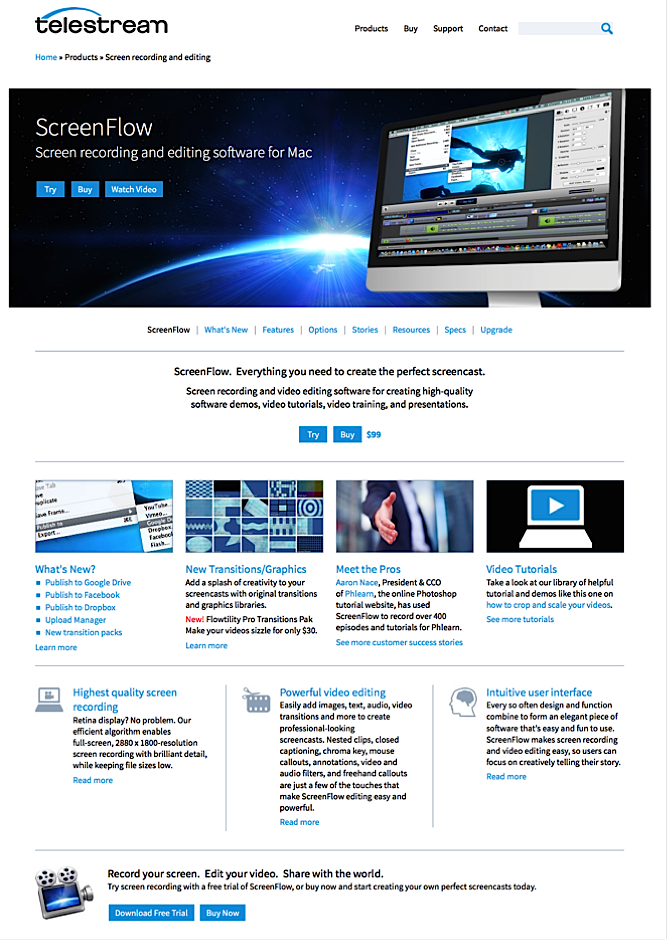
Source: Wider Funnel
In addition to that, important product features were pushed far down the page, where many users weren’t actually scrolling.
By changing the CTAs on the hero image and making them more focused, they were able to boost completed orders by 16%.
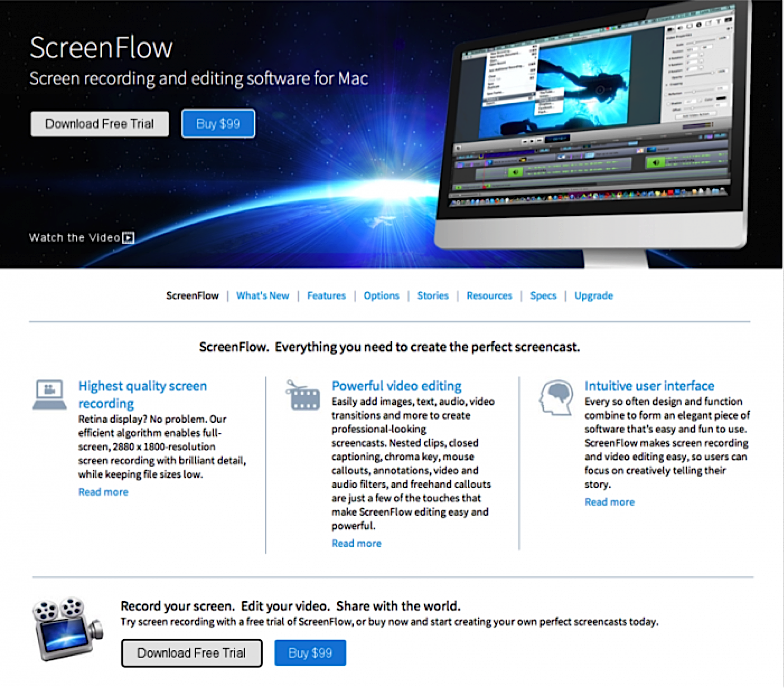
Notice how the image above highlights the product features and explicitly encourages prospects to move down the funnel by downloading a free trial or buying directly.
Conclusion
A few minor changes to your landing page copy can make a drastic difference when it comes to your conversions. By reducing friction and providing prospects with content that helps them make the decision to take next step in your sales process, you could potentially get massive increases in conversions overnight.
There are different ways to construct your sales funnel. You can use the classic AIDA approach, or add steps to the end of your funnel as suggested by Neil Patel’s conversion funnel.
You could make your funnel even more complicated, depending on the data you want to measure.
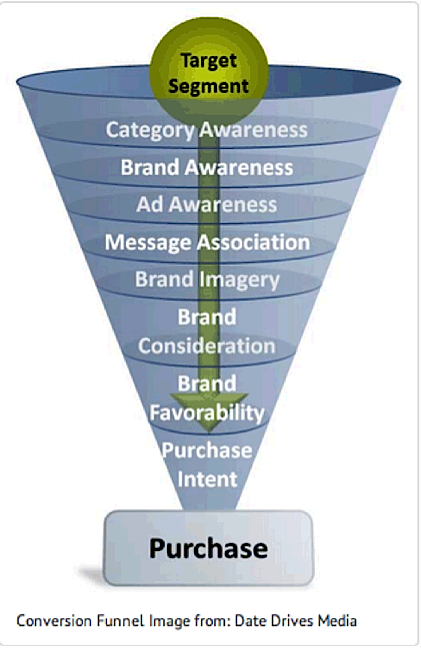
But at the end of the day, the same principles apply. You still have to guide your potential customers from the time they first hear about your business to the time they’re ready to make a purchase in the simplest way possible.
Depending on the amount of traffic you get, even small amounts of friction in your funnel could cause high drop off at each step. That’s why it’s important to understand what your customers want — and what their emotions are — at a deep level, so that you can push them through your funnel as smoothly as possible without leaving much money on the table.
Did you miss the first post in this series? Read it now: The Ultimate Guide to Creating Your Marketing Funnel



